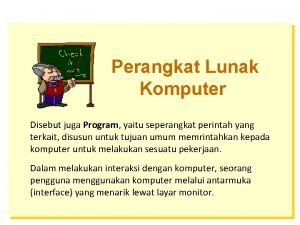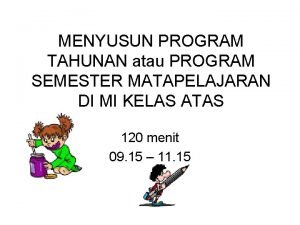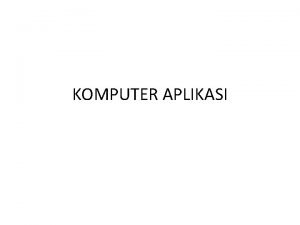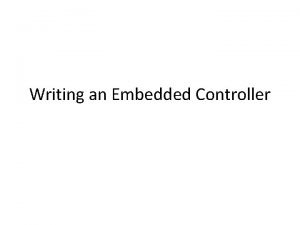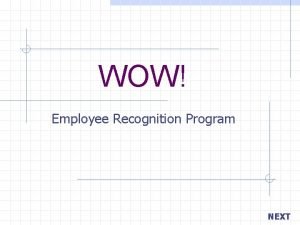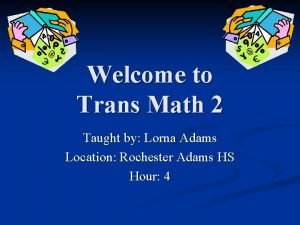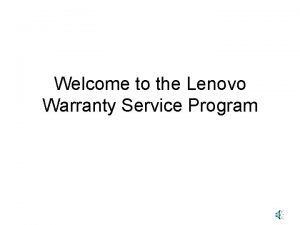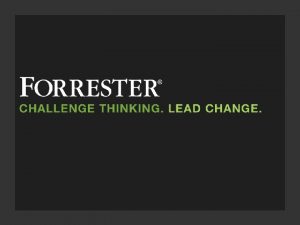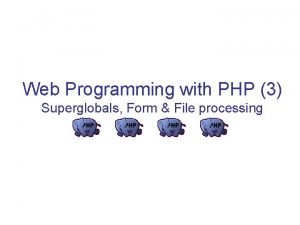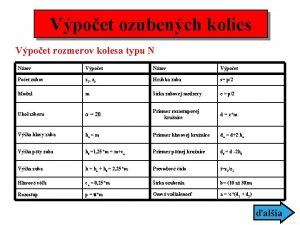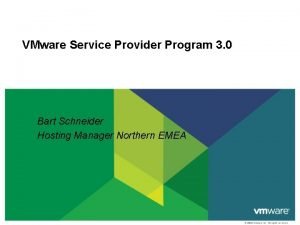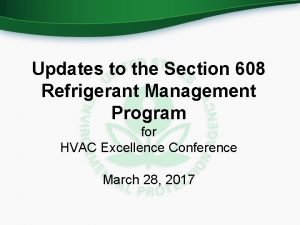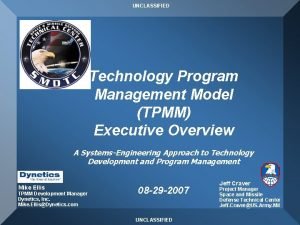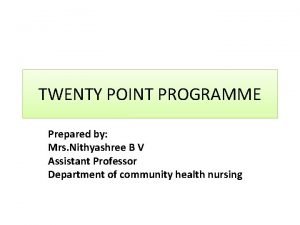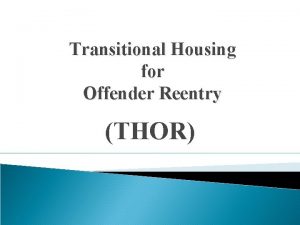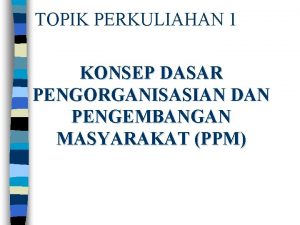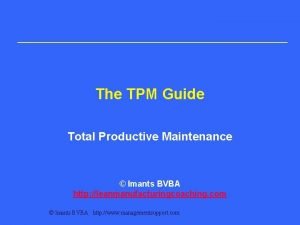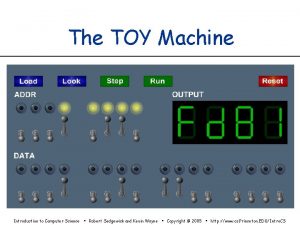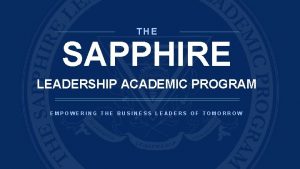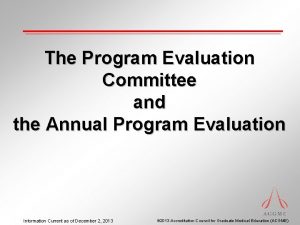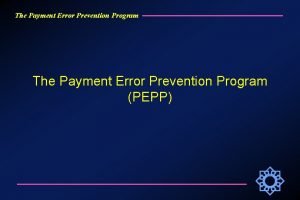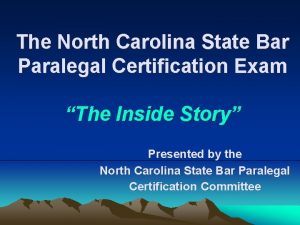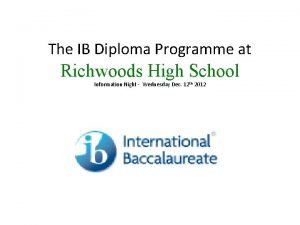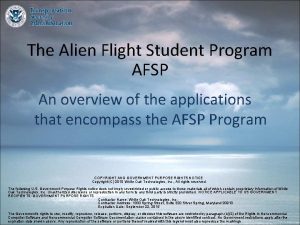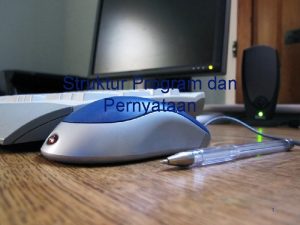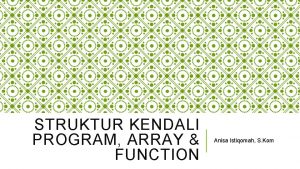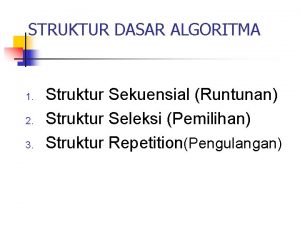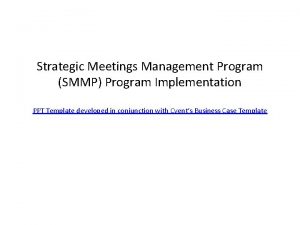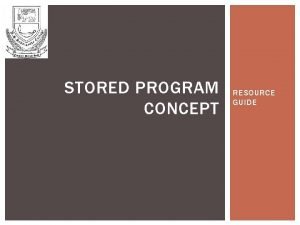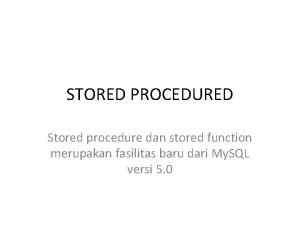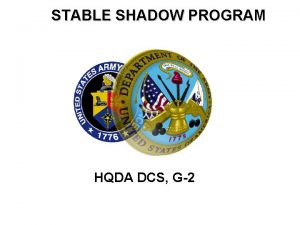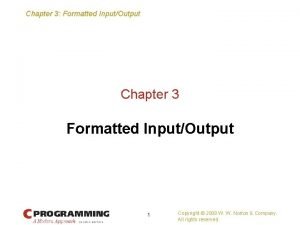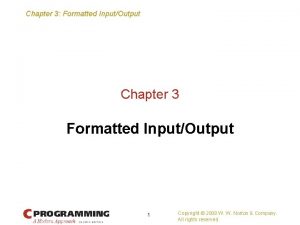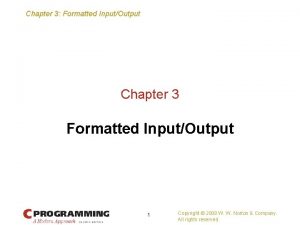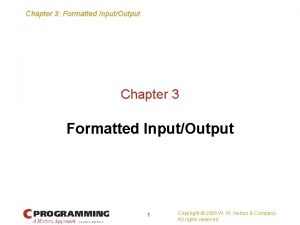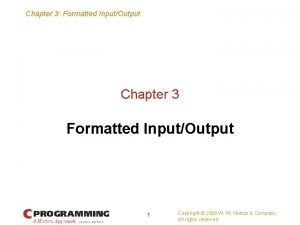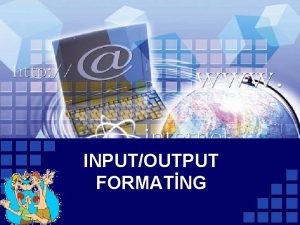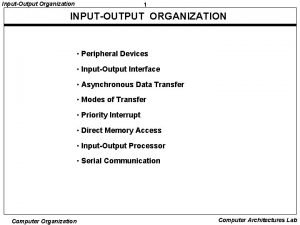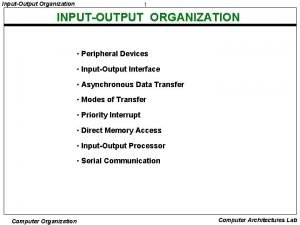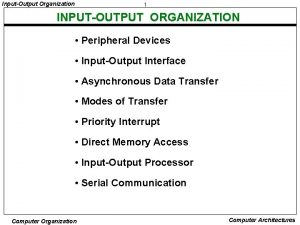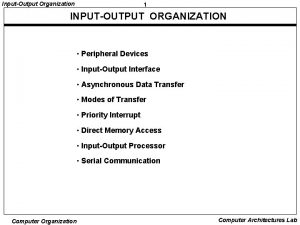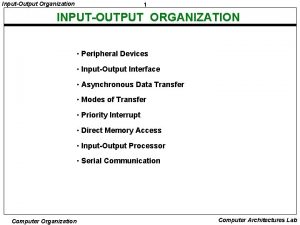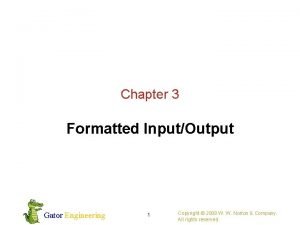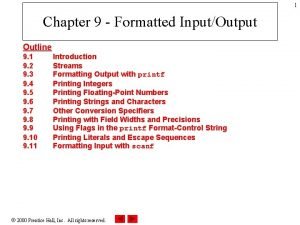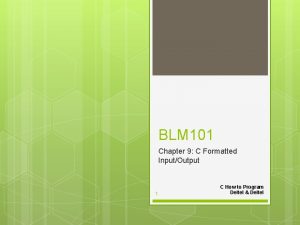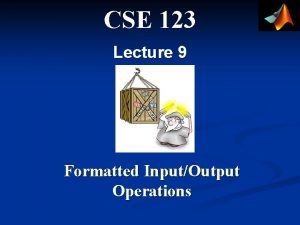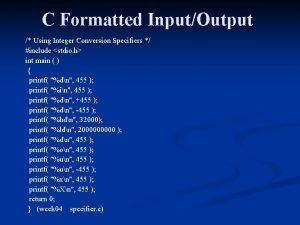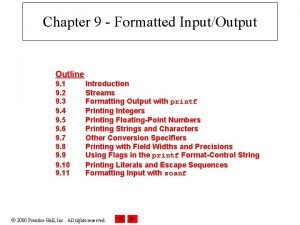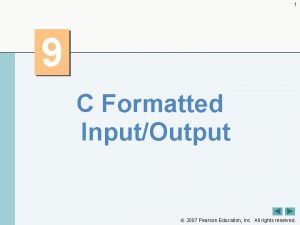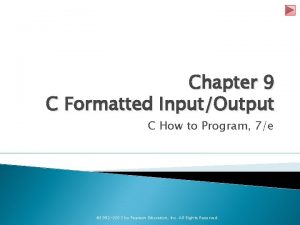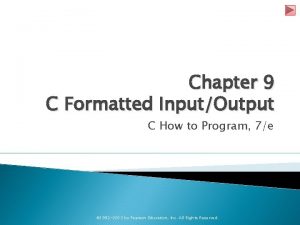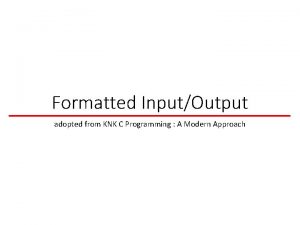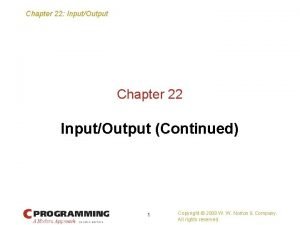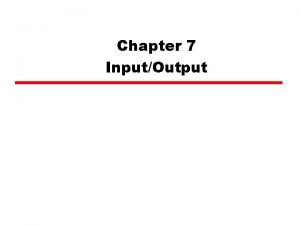C Formatted InputOutput C How to Program 6e

































































































- Slides: 97

C Formatted Input/Output C How to Program, 6/e © 1992 -2010 by Pearson Education, Inc. All Rights Reserved.

© 1992 -2010 by Pearson Education, Inc. All Rights Reserved.

© 1992 -2010 by Pearson Education, Inc. All Rights Reserved.

9. 1 Introduction � An important part of the solution to any problem is the presentation of the results. � In this chapter, we discuss in depth the formatting features of scanf and printf. � These functions input data from the standard input stream and output data to the standard output stream. � Four other functions that use the standard input and standard output—gets, puts, getchar and putchar—were discussed in Chapter 8. � Include the header <stdio. h> in programs that call these functions. © 1992 -2010 by Pearson Education, Inc. All Rights Reserved.

9. 2 Streams � All input and output is performed with streams, which are sequences of bytes. � In input operations, the bytes flow from a device (e. g. , a keyboard, a disk drive, a network connection) to main memory. � In output operations, bytes flow from main memory to a device (e. g. , a display screen, a printer, a disk drive, a network connection, and so on). � When program execution begins, three streams are connected to the program automatically. © 1992 -2010 by Pearson Education, Inc. All Rights Reserved.

9. 2 Streams (Cont. ) � Normally, the standard input stream is connected to the keyboard and the standard output stream is connected to the screen. � Operating systems often allow these streams to be redirected to other devices. � A third stream, the standard error stream, is connected to the screen. � Error messages are output to the standard error stream. © 1992 -2010 by Pearson Education, Inc. All Rights Reserved.

9. 3 Formatting Output with printf � Precise output formatting is accomplished with printf. � Every printf call contains a format control string that describes the output format. � The format control string consists of conversion specifiers, flags, field widths, precisions and literal characters. � Together with the percent sign (%), these form conversion specifications. © 1992 -2010 by Pearson Education, Inc. All Rights Reserved.

9. 3 Formatting Output with printf (Cont. ) � Function printf can perform the following formatting capabilities, each of which is discussed in this chapter: ◦ Rounding floating-point values to an indicated number of decimal places. ◦ Aligning a column of numbers with decimal points appearing one above the other. ◦ Right justification and left justification of outputs. ◦ Inserting literal characters at precise locations in a line of output. ◦ Representing floating-point numbers in exponential format. ◦ Representing unsigned integers in octal and hexadecimal format. See Appendix C for more information on octal and hexadecimal values. ◦ Displaying all types of data with fixed-size field widths and precisions. © 1992 -2010 by Pearson Education, Inc. All Rights Reserved.

9. 3 Formatting Output with printf (Cont. ) � The printf function has the form �printf( format-control-string, other-arguments ); format-control-string describes the output format, and other-arguments (which are optional) correspond to each conversion specification in format-control-string. � Each conversion specification begins with a percent sign and ends with a conversion specifier. � There can be many conversion specifications in one format control string. © 1992 -2010 by Pearson Education, Inc. All Rights Reserved.

© 1992 -2010 by Pearson Education, Inc. All Rights Reserved.

© 1992 -2010 by Pearson Education, Inc. All Rights Reserved.

9. 4 Printing Integers � An integer is a whole number, such as 776, 0 or – 52, that contains no decimal point. � Integer values are displayed in one of several formats. � Figure 9. 1 describes the integer conversion specifiers. © 1992 -2010 by Pearson Education, Inc. All Rights Reserved.

© 1992 -2010 by Pearson Education, Inc. All Rights Reserved.

9. 4 Printing Integers (Cont. ) � Figure 9. 2 prints an integer using each of the integer conversion specifiers. � Only the minus sign prints; plus signs are suppressed. � Also, the value -455, when read by %u (line 15), is converted to the unsigned value 4294966841. © 1992 -2010 by Pearson Education, Inc. All Rights Reserved.

© 1992 -2010 by Pearson Education, Inc. All Rights Reserved.

© 1992 -2010 by Pearson Education, Inc. All Rights Reserved.

© 1992 -2010 by Pearson Education, Inc. All Rights Reserved.

9. 5 Printing Floating-Point Numbers �A floating-point value contains a decimal point as in 33. 5, 0. 0 or -657. 983. � Floating-point values are displayed in one of several formats. � Figure 9. 3 describes the floating-point conversion specifiers. � The conversion specifiers e and E display floatingpoint values in exponential notation—the computer equivalent of scientific notation used in mathematics. © 1992 -2010 by Pearson Education, Inc. All Rights Reserved.

9. 5 Printing Floating-Point Numbers (Cont. ) � For example, the value 150. 4582 is represented in scientific notation as � 1. 504582 ´ 102 � and is represented in exponential notation as � 1. 504582 E+02 � by the computer. � This notation indicates that 1. 504582 is multiplied by 10 raised to the second power (E+02). � The E stands for “exponent. ” © 1992 -2010 by Pearson Education, Inc. All Rights Reserved.

9. 5 Printing Floating-Point Numbers (Cont. ) � Values displayed with the conversion specifiers e, E and f show six digits of precision to the right of the decimal point by default (e. g. , 1. 04592); other precisions can be specified explicitly. � Conversion specifier f always prints at least one digit to the left of the decimal point. � Conversion specifiers e and E print lowercase e and uppercase E, respectively, preceding the exponent, and print exactly one digit to the left of the decimal point. � Conversion specifier g (or G) prints in either e (E) or f format with no trailing zeros (1. 234000 is printed as 1. 234). © 1992 -2010 by Pearson Education, Inc. All Rights Reserved.

9. 5 Printing Floating-Point Numbers (Cont. ) � Values are printed with e (E) if, after conversion to exponential notation, the value’s exponent is less than 4, or the exponent is greater than or equal to the specified precision (six significant digits by default for g and G). � Otherwise, conversion specifier f is used to print the value. � Trailing zeros are not printed in the fractional part of a value output with g or G. � At least one decimal digit is required for the decimal point to be output. © 1992 -2010 by Pearson Education, Inc. All Rights Reserved.

9. 5 Printing Floating-Point Numbers (Cont. ) � The values 0. 0000875, 8750000. 0, 8. 75, 87. 50 and 875 are printed as 8. 75 e-05, 8. 75 e+06, 8. 75, 87. 5 and 875 with the conversion specifier g. � The value 0. 0000875 uses e notation because, when it’s converted to exponential notation, its exponent (-5) is less than -4. � The value 8750000. 0 uses e notation because its exponent (6) is equal to the default precision. © 1992 -2010 by Pearson Education, Inc. All Rights Reserved.

© 1992 -2010 by Pearson Education, Inc. All Rights Reserved.

9. 5 Printing Floating-Point Numbers (Cont. ) � The precision for conversion specifiers g and G indicates the maximum number of significant digits printed, including the digit to the left of the decimal point. � The value 1234567. 0 is printed as 1. 23457 e+06, using conversion specifier %g (remember that all floatingpoint conversion specifiers have a default precision of 6). � There are 6 significant digits in the result. � The difference between g and G is identical to the difference between e and E when the value is printed in exponential notation—lowercase g causes a lowercase e to be output, and uppercase G causes an uppercase E to be output. © 1992 -2010 by Pearson Education, Inc. All Rights Reserved.

© 1992 -2010 by Pearson Education, Inc. All Rights Reserved.

9. 5 Printing Floating-Point Numbers (Cont. ) � Figure 9. 4 demonstrates each of the floating-point conversion specifiers. � The %E, %e and %g conversion specifiers cause the value to be rounded in the output and the conversion specifier %f does not. � With some compilers, the exponent in the outputs will be shown with two digits to the right of the + sign. © 1992 -2010 by Pearson Education, Inc. All Rights Reserved.

© 1992 -2010 by Pearson Education, Inc. All Rights Reserved.

© 1992 -2010 by Pearson Education, Inc. All Rights Reserved.

9. 6 Printing Strings and Characters � The c and s conversion specifiers are used to print individual characters and strings, respectively. � Conversion specifier c requires a char argument. � Conversion specifier s requires a pointer to char as an argument. � Conversion specifier s causes characters to be printed until a terminating null ('�') character is encountered. � The program shown in Fig. 9. 5 displays characters and strings with conversion specifiers c and s. © 1992 -2010 by Pearson Education, Inc. All Rights Reserved.

© 1992 -2010 by Pearson Education, Inc. All Rights Reserved.

© 1992 -2010 by Pearson Education, Inc. All Rights Reserved.

© 1992 -2010 by Pearson Education, Inc. All Rights Reserved.

© 1992 -2010 by Pearson Education, Inc. All Rights Reserved.

© 1992 -2010 by Pearson Education, Inc. All Rights Reserved.

9. 7 Other Conversion Specifiers � The three remaining conversion specifiers are p, n and % (Fig. 9. 6). � The conversion specifier %n stores the number of characters output so far in the current printf—the corresponding argument is a pointer to an integer variable in which the value is stored—nothing is printed by a %n. � The conversion specifier % causes a percent sign to be output. © 1992 -2010 by Pearson Education, Inc. All Rights Reserved.

© 1992 -2010 by Pearson Education, Inc. All Rights Reserved.

9. 7 Other Conversion Specifiers (Cont. ) � Figure 9. 7’s %p prints the value of ptr and the address of x; these values are identical because ptr is assigned the address of x. � Next, %n stores the number of characters output by the third printf statement (line 15) in integer variable y, and the value of y is printed. � The last printf statement (line 21) uses %% to print the % character in a character string. © 1992 -2010 by Pearson Education, Inc. All Rights Reserved.

9. 7 Other Conversion Specifiers (Cont. ) � Every printf call returns a value—either the number of characters output, or a negative value if an output error occurs. � [Note: This example will not execute in Microsoft Visual C++ because %n has been disabled by Microsoft “for security reasons. ” To execute the rest of the program, remove lines 15– 16. ] © 1992 -2010 by Pearson Education, Inc. All Rights Reserved.

© 1992 -2010 by Pearson Education, Inc. All Rights Reserved.

© 1992 -2010 by Pearson Education, Inc. All Rights Reserved.

© 1992 -2010 by Pearson Education, Inc. All Rights Reserved.

© 1992 -2010 by Pearson Education, Inc. All Rights Reserved.

9. 8 Printing with Field Widths and Precision � The exact size of a field in which data is printed is specified by a field width. � If the field width is larger than the data being printed, the data will normally be right justified within that field. � An integer representing the field width is inserted between the percent sign (%) and the conversion specifier (e. g. , %4 d). � Figure 9. 8 prints two groups of five numbers each, right justifying those containing fewer digits than the field width. � The field width is increased to print values wider than the field and that the minus sign for a negative value uses one character position in the field width. � Field widths can be used with all conversion specifiers. © 1992 -2010 by Pearson Education, Inc. All Rights Reserved.

© 1992 -2010 by Pearson Education, Inc. All Rights Reserved.

© 1992 -2010 by Pearson Education, Inc. All Rights Reserved.

© 1992 -2010 by Pearson Education, Inc. All Rights Reserved.

9. 8 Printing with Field Widths and Precision (Cont. ) � Function printf also enables you to specify the precision with which data is printed. � Precision has different meanings for different data types. � When used with integer conversion specifiers, precision indicates the minimum number of digits to be printed. � If the printed value contains fewer digits than the specified precision and the precision value has a leading zero or decimal point, zeros are prefixed to the printed value until the total number of digits is equivalent to the precision. � If neither a zero nor a decimal point is present in the precision value, spaces are inserted instead. © 1992 -2010 by Pearson Education, Inc. All Rights Reserved.

9. 8 Printing with Field Widths and Precision (Cont. ) � The default precision for integers is 1. � When used with floating-point conversion specifiers e, E and f, the precision is the number of digits to appear after the decimal point. � When used with conversion specifiers g and G, the precision is the maximum number of significant digits to be printed. � When used with conversion specifier s, the precision is the maximum number of characters to be written from the string. � To use precision, place a decimal point (. ), followed by an integer representing the precision between the percent sign and the conversion specifier. © 1992 -2010 by Pearson Education, Inc. All Rights Reserved.

9. 8 Printing with Field Widths and Precision (Cont. ) � Figure 9. 9 demonstrates the use of precision in format control strings. � When a floating-point value is printed with a precision smaller than the original number of decimal places in the value, the value is rounded. © 1992 -2010 by Pearson Education, Inc. All Rights Reserved.

© 1992 -2010 by Pearson Education, Inc. All Rights Reserved.

© 1992 -2010 by Pearson Education, Inc. All Rights Reserved.

9. 8 Printing with Field Widths and Precision (Cont. ) � The field width and the precision can be combined by placing the field width, followed by a decimal point, followed by a precision between the percent sign and the conversion specifier, as in the statement �printf( "%9. 3 f", 123. 456789 ); which displays 123. 457 with three digits to the right of the decimal point right justified in a nine-digit field. � It’s possible to specify the field width and the precision using integer expressions in the argument list following the format control string. © 1992 -2010 by Pearson Education, Inc. All Rights Reserved.

9. 8 Printing with Field Widths and Precision (Cont. ) � To use this feature, insert an asterisk (*) in place of the field width or precision (or both). � The matching int argument in the argument list is evaluated and used in place of the asterisk. � A field width’s value may be either positive or negative (which causes the output to be left justified in the field as described in the next section). � The statement �printf( "%*. *f", 7, 2, 98. 736 ); uses 7 for the field width, 2 for the precision and outputs the value 98. 74 right justified. © 1992 -2010 by Pearson Education, Inc. All Rights Reserved.

9. 9 Using Flags in the printf Format Control String � Function printf also provides flags to supplement its output formatting capabilities. � Five flags are available for use in format control strings (Fig. 9. 10). � To use a flag in a format control string, place the flag immediately to the right of the percent sign. � Several flags may be combined in one conversion specifier. © 1992 -2010 by Pearson Education, Inc. All Rights Reserved.

© 1992 -2010 by Pearson Education, Inc. All Rights Reserved.

9. 9 Using Flags in the printf Format Control String (Cont. ) � Figure 9. 11 demonstrates right justification and left justification of a string, an integer, a character and a floating-point number. © 1992 -2010 by Pearson Education, Inc. All Rights Reserved.

© 1992 -2010 by Pearson Education, Inc. All Rights Reserved.

9. 9 Using Flags in the printf Format Control String (Cont. ) � Figure 9. 12 prints a positive number and a negative number, each with and without the + flag. � The minus sign is displayed in both cases, but the plus sign is displayed only when the + flag is used. © 1992 -2010 by Pearson Education, Inc. All Rights Reserved.

© 1992 -2010 by Pearson Education, Inc. All Rights Reserved.

9. 9 Using Flags in the printf Format Control String (Cont. ) � Figure 9. 13 prefixes a space to the positive number with the space flag. � This is useful for aligning positive and negative numbers with the same number of digits. � The value -547 is not preceded by a space in the output because of its minus sign. © 1992 -2010 by Pearson Education, Inc. All Rights Reserved.

© 1992 -2010 by Pearson Education, Inc. All Rights Reserved.

9. 9 Using Flags in the printf Format Control String (Cont. ) � Figure 9. 14 uses the # flag to prefix 0 to the octal value and 0 x and 0 X to the hexadecimal values, and to force the decimal point on a value printed with g. © 1992 -2010 by Pearson Education, Inc. All Rights Reserved.

© 1992 -2010 by Pearson Education, Inc. All Rights Reserved.

© 1992 -2010 by Pearson Education, Inc. All Rights Reserved.

9. 9 Using Flags in the printf Format Control String (Cont. ) � Figure 9. 15 combines the + flag and the 0 (zero) flag to print 452 in a 9 -space field with a + sign and leading zeros, then prints 452 again using only the 0 flag and a 9 -space field. © 1992 -2010 by Pearson Education, Inc. All Rights Reserved.

© 1992 -2010 by Pearson Education, Inc. All Rights Reserved.

9. 10 Printing Literals and Escape Sequences � Most literal characters to be printed in a printf statement can simply be included in the format control string. � However, there are several “problem” characters, such as the quotation mark (") that delimits the format control string itself. � Various control characters, such as newline and tab, must be represented by escape sequences. � An escape sequence is represented by a backslash (), followed by a particular escape character. � Figure 9. 16 lists the escape sequences and the actions they cause. © 1992 -2010 by Pearson Education, Inc. All Rights Reserved.

© 1992 -2010 by Pearson Education, Inc. All Rights Reserved.

© 1992 -2010 by Pearson Education, Inc. All Rights Reserved.

9. 11 Reading Formatted Input with scanf � Precise input formatting can be accomplished with scanf. � Every scanf statement contains a format control string that describes the format of the data to be input. � The format control string consists of conversion specifiers and literal characters. � Function scanf has the following input formatting capabilities: ◦ Inputting all types of data. ◦ Inputting specific characters from an input stream. ◦ Skipping specific characters in the input stream. © 1992 -2010 by Pearson Education, Inc. All Rights Reserved.

9. 11 Reading Formatted Input with scanf (Cont. ) � Function scanf is written in the following form: �scanf( format-control-string, other-arguments ); format-control-string describes the formats of the input, and other-arguments are pointers to variables in which the input will be stored. © 1992 -2010 by Pearson Education, Inc. All Rights Reserved.

© 1992 -2010 by Pearson Education, Inc. All Rights Reserved.

© 1992 -2010 by Pearson Education, Inc. All Rights Reserved.

9. 11 Reading Formatted Input with scanf (Cont. ) � Figure 9. 17 summarizes the conversion specifiers used to input all types of data. � The remainder of this section provides programs that demonstrate reading data with the various scanf conversion specifiers. © 1992 -2010 by Pearson Education, Inc. All Rights Reserved.

© 1992 -2010 by Pearson Education, Inc. All Rights Reserved.

© 1992 -2010 by Pearson Education, Inc. All Rights Reserved.

© 1992 -2010 by Pearson Education, Inc. All Rights Reserved.

9. 11 Reading Formatted Input with scanf (Cont. ) � Figure 9. 18 reads integers with the various integer conversion specifiers and displays the integers as decimal numbers. � Conversion specifier %i is capable of inputting decimal, octal and hexadecimal integers. © 1992 -2010 by Pearson Education, Inc. All Rights Reserved.

© 1992 -2010 by Pearson Education, Inc. All Rights Reserved.

© 1992 -2010 by Pearson Education, Inc. All Rights Reserved.

9. 11 Reading Formatted Input with scanf (Cont. ) � When inputting floating-point numbers, any of the floating-point conversion specifiers e, E, f, g or G can be used. � Figure 9. 19 reads three floating-point numbers, one with each of the three types of floating conversion specifiers, and displays all three numbers with conversion specifier f. � The program output confirms the fact that floatingpoint values are imprecise—this is highlighted by the third value printed. © 1992 -2010 by Pearson Education, Inc. All Rights Reserved.

© 1992 -2010 by Pearson Education, Inc. All Rights Reserved.

© 1992 -2010 by Pearson Education, Inc. All Rights Reserved.

9. 11 Reading Formatted Input with scanf (Cont. ) � Characters and strings are input using the conversion specifiers c and s, respectively. � Figure 9. 20 prompts the user to enter a string. � The program inputs the first character of the string with %c and stores it in the character variable x, then inputs the remainder of the string with %s and stores it in character array y. © 1992 -2010 by Pearson Education, Inc. All Rights Reserved.

© 1992 -2010 by Pearson Education, Inc. All Rights Reserved.

9. 11 Reading Formatted Input with scanf (Cont. ) �A sequence of characters can be input using a scan set. � A scan set is a set of characters enclosed in square brackets, [], and preceded by a percent sign in the format control string. � A scan set scans the characters in the input stream, looking only for those characters that match characters contained in the scan set. � Each time a character is matched, it’s stored in the scan set’s corresponding argument—a pointer to a character array. � The scan set stops inputting characters when a character that is not contained in the scan set is encountered. © 1992 -2010 by Pearson Education, Inc. All Rights Reserved.

9. 11 Reading Formatted Input with scanf (Cont. ) � If the first character in the input stream does not match a character in the scan set, only the null character is stored in the array. � Figure 9. 21 uses the scan set [aeiou] to scan the input stream for vowels. � Notice that the first seven letters of the input are read. � The eighth letter (h) is not in the scan set and therefore the scanning is terminated. © 1992 -2010 by Pearson Education, Inc. All Rights Reserved.

© 1992 -2010 by Pearson Education, Inc. All Rights Reserved.

9. 11 Reading Formatted Input with scanf (Cont. ) � The scan set can also be used to scan for characters not contained in the scan set by using an inverted scan set. � To create an inverted scan set, place a caret (^) in the square brackets before the scan characters. � This causes characters not appearing in the scan set to be stored. � When a character contained in the inverted scan set is encountered, input terminates. � Figure 9. 22 uses the inverted scan set [^aeiou] to search for consonants—more properly to search for “nonvowels. ” © 1992 -2010 by Pearson Education, Inc. All Rights Reserved.

© 1992 -2010 by Pearson Education, Inc. All Rights Reserved.

9. 11 Reading Formatted Input with scanf (Cont. ) �A field width can be used in a scanf conversion specifier to read a specific number of characters from the input stream. � Figure 9. 23 inputs a series of consecutive digits as a two-digit integer and an integer consisting of the remaining digits in the input stream. © 1992 -2010 by Pearson Education, Inc. All Rights Reserved.

© 1992 -2010 by Pearson Education, Inc. All Rights Reserved.

9. 11 Reading Formatted Input with scanf (Cont. ) � Often it’s necessary to skip certain characters in the input stream. � For example, a date could be entered as � 11 -10 -1999 � Each number in the date needs to be stored, but the dashes that separate the numbers can be discarded. � To eliminate unnecessary characters, include them in the format control string of scanf (white-space characters—such as space, newline and tab—skip all leading white-space). © 1992 -2010 by Pearson Education, Inc. All Rights Reserved.

9. 11 Reading Formatted Input with scanf (Cont. ) � For example, to skip the dashes in the input, use the statement �scanf( "%d-%d-%d", &month, &day, &year ); � Although, this scanf does eliminate the dashes in the preceding input, it’s possible that the date could be entered as � 10/11/1999 � In this case, the preceding scanf would not eliminate the unnecessary characters. � For this reason, scanf provides the assignment suppression character *. © 1992 -2010 by Pearson Education, Inc. All Rights Reserved.

9. 11 Reading Formatted Input with scanf (Cont. ) � The assignment suppression character enables scanf to read any type of data from the input and discard it without assigning it to a variable. � Figure 9. 24 uses the assignment suppression character in the %c conversion specifier to indicate that a character appearing in the input stream should be read and discarded. � Only the month, day and year are stored. � The values of the variables are printed to demonstrate that they are in fact input correctly. � The argument lists for each scanf call do not contain variables for the conversion specifiers that use the assignment suppression character. � The corresponding characters are simply discarded. © 1992 -2010 by Pearson Education, Inc. All Rights Reserved.

© 1992 -2010 by Pearson Education, Inc. All Rights Reserved.

© 1992 -2010 by Pearson Education, Inc. All Rights Reserved.
 Inputoutput devices
Inputoutput devices Author heading format
Author heading format Osi network management model
Osi network management model Sequential program and an event-driven program
Sequential program and an event-driven program Perangkat lunak komputer disebut juga dengan
Perangkat lunak komputer disebut juga dengan Merancang program tahunan dan program semester
Merancang program tahunan dan program semester Microsoft excel merupakan program aplikasi .......
Microsoft excel merupakan program aplikasi ....... Microsoft office excel adalah aplikasi pengolah
Microsoft office excel adalah aplikasi pengolah Program ms word merupakan program …. *
Program ms word merupakan program …. * Program zedinjene slovenije
Program zedinjene slovenije Outcome kotaku
Outcome kotaku Xxx school
Xxx school Xilinx university program
Xilinx university program Wwwseznamcz
Wwwseznamcz Steph westwood writing program
Steph westwood writing program Embedded controller program
Embedded controller program Proposal for employee recognition program
Proposal for employee recognition program Fatou assah
Fatou assah Institutional medicaid
Institutional medicaid Wioa youth program elements
Wioa youth program elements Sperry
Sperry Gdl examination permit
Gdl examination permit Homeland security infrastructure program
Homeland security infrastructure program Westlake magnet program
Westlake magnet program Homeshare program melbourne
Homeshare program melbourne Unionville high school open house
Unionville high school open house Trans math program
Trans math program Weatherization assistance program virginia
Weatherization assistance program virginia Lenovo self maintainer program
Lenovo self maintainer program Creighton honors program
Creighton honors program Aces james scholar
Aces james scholar Aiesec internship program
Aiesec internship program Local guide program
Local guide program Dts gate motor status light flashing
Dts gate motor status light flashing How to program a dts gate motor
How to program a dts gate motor The webinar will begin soon
The webinar will begin soon Local guide program
Local guide program Oriflame dream program
Oriflame dream program Forrester wave loyalty program service providers
Forrester wave loyalty program service providers Php superglobals
Php superglobals Employee assistance program seattle
Employee assistance program seattle Talking points wcpss
Talking points wcpss Local guide program
Local guide program Výpočet ozubeného kolesa vzorce
Výpočet ozubeného kolesa vzorce Stored program architecture
Stored program architecture Vmware service provider program
Vmware service provider program Medicines management programme
Medicines management programme Unp nano
Unp nano Aecp army
Aecp army Munitions history program answers
Munitions history program answers Mspp microsoft
Mspp microsoft Technology program management model
Technology program management model Ubc nursing supplemental application
Ubc nursing supplemental application Gsa drive-thru login
Gsa drive-thru login Business facilitation program visa
Business facilitation program visa Army star program
Army star program Twenty points program
Twenty points program Thor directory ga
Thor directory ga University of brasov
University of brasov Tlr program
Tlr program Contoh program integratif
Contoh program integratif Hakikat ips sebagai program pendidikan
Hakikat ips sebagai program pendidikan Mmm program kellogg
Mmm program kellogg Pilot proficiency award program
Pilot proficiency award program Opim wharton
Opim wharton Laura manydeeds
Laura manydeeds Tpm process
Tpm process Toy machine simulator
Toy machine simulator Sapphire leadership academic program
Sapphire leadership academic program River edge after school program
River edge after school program Program evaluation committee checklist
Program evaluation committee checklist Plant genome research program
Plant genome research program Payment error prevention program
Payment error prevention program Nc paralegal exam
Nc paralegal exam Richwoods ib program
Richwoods ib program Fda efs
Fda efs Cook county early resolution program
Cook county early resolution program Columbia coaching certification program
Columbia coaching certification program Bvor program
Bvor program Baldrige performance excellence program
Baldrige performance excellence program Alien flight student program
Alien flight student program Alert program occupational therapy
Alert program occupational therapy 8 elements of compliance program
8 elements of compliance program Háromszög középvonala tulajdonságai
Háromszög középvonala tulajdonságai Tech voc definition
Tech voc definition Tcl radiology program
Tcl radiology program Tata education excellence program
Tata education excellence program Local guide program
Local guide program Student exchange program ipsf
Student exchange program ipsf Contoh program qbasic
Contoh program qbasic Struktur kendali
Struktur kendali Contoh program antrian pada python
Contoh program antrian pada python Flowchart runtunan
Flowchart runtunan Strategic meetings management strategy
Strategic meetings management strategy Stored program control concept
Stored program control concept Procedured
Procedured Batch reunion program of activities
Batch reunion program of activities Stable shadow program
Stable shadow program




